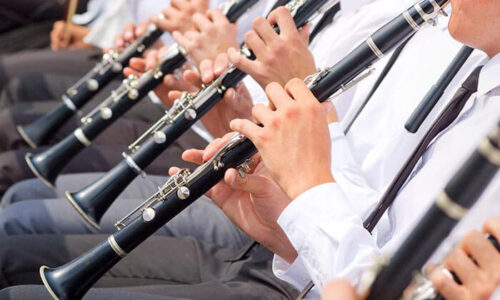Have you ever wondered, “How much is a Highland cow?” These adorable, shaggy creatures are not just eye-catching; they’re also valuable. Whether you’re considering starting a small farm or simply curious about these iconic Scottish animals, understanding their price is key. From their distinctive long horns to their woolly coats, Highland cows have a charm that’s hard to resist.
In this guide, we’ll explore the factors that influence their cost, so you’ll know exactly what to expect when looking to bring one of these majestic bovines into your life.
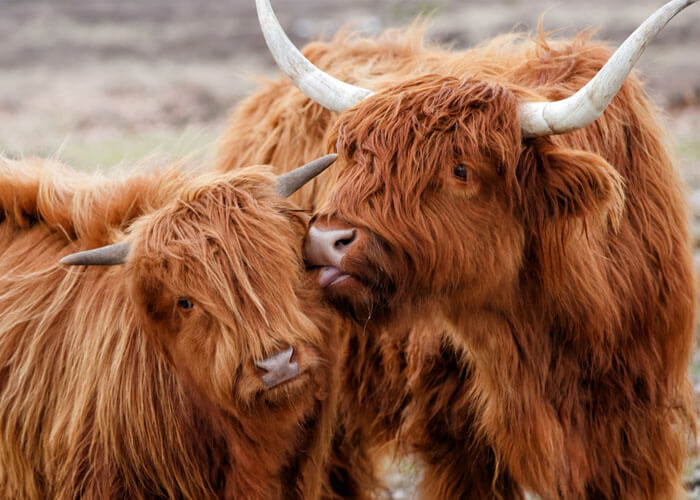
How Much is a Highland Cow?
Brief Introduction to Highland Cows
Highland cows, also known as Highland cattle or “Heilan coos” in Scots, are a distinct and ancient breed originating from the Scottish Highlands. These cattle are easily recognized by their long, curved horns and thick, shaggy coats, which come in various colors, including red, black, yellow, white, and brindle. The breed is known for its hardiness and ability to thrive in harsh conditions, making them a symbol of resilience and strength in Scottish culture.
Highland cows have a long history dating back to the 6th century when they were initially bred for their meat and milk. Today, they are appreciated not only for their utility but also for their unique appearance and gentle temperament. These cows are known to be friendly and docile, making them a favorite among farmers and cattle enthusiasts.
When considering the cost of a Highland cow, it’s essential to understand that several factors influence their price. These factors include age, gender, pedigree, and whether the cow is registered with a breed association. Typically, the cost of a Highland cow can range from a few hundred to several thousand dollars, depending on these variables. Understanding these factors can help potential buyers make informed decisions when investing in these magnificent animals.
Popularity and Unique Characteristics
Highland cows have gained immense popularity worldwide, not only for their distinctive looks but also for their unique characteristics that set them apart from other cattle breeds. Their long, shaggy coats are perhaps their most striking feature, providing them with excellent insulation against cold weather. This characteristic makes them particularly well-suited for colder climates, as their thick fur keeps them warm and protected from harsh winds and snow.
In addition to their physical attributes, Highland cows are known for their exceptional foraging ability. They can thrive on rough terrain and poor-quality vegetation, which many other breeds cannot. This makes them an economical choice for farmers looking to raise cattle on less fertile land. Furthermore, Highland cows are relatively low-maintenance compared to other breeds, requiring less intervention in terms of feeding and healthcare.
The gentle and calm demeanor of Highland cows is another reason for their popularity. They are known to be friendly and easy to handle, making them a favorite among small-scale farmers and hobbyists. Their docile nature also makes them suitable for educational farms and petting zoos, where they can interact with the public without posing a threat.
The rising interest in sustainable and organic farming practices has also contributed to the popularity of Highland cows. Their ability to graze on natural pastures and their low-input requirements align well with eco-friendly farming methods. This has led to an increased demand for Highland cows among those seeking to establish environmentally sustainable farming operations.
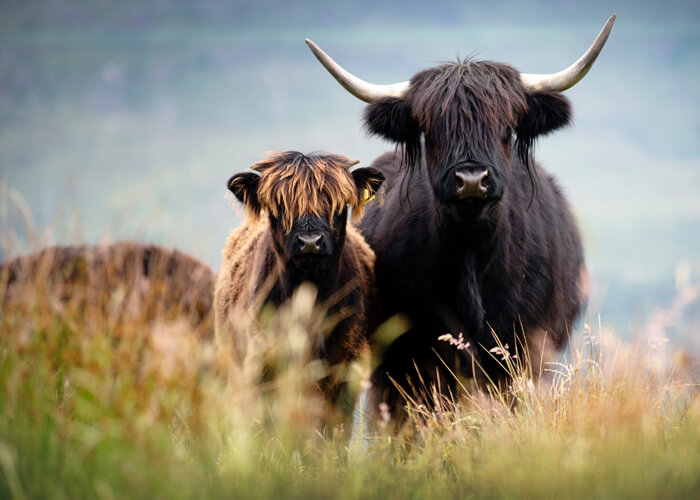
Factors Influencing the Cost of a Highland Cow
Age: Calves vs. Adults
The age of a Highland cow significantly affects its price. Calves, typically under one-year-old, are generally less expensive than adult cows. Calves might cost anywhere from a few hundred to a couple of thousand dollars, depending on their pedigree and health. Purchasing a calf can be an excellent option for those looking to raise the cow themselves, allowing for better bonding and training from a young age. However, it also means a longer wait for the cow to reach maturity and provide potential benefits, such as milk or breeding capabilities.
Adult Highland cows, on the other hand, are usually more expensive due to their immediate utility. Mature cows, especially those with proven breeding records, can command higher prices, often ranging from a few thousand to several thousand dollars. The increased cost reflects their readiness to contribute to a breeding program or milk production. Buyers need to consider their immediate needs and long-term goals when deciding between purchasing a calf or an adult cow. The higher initial investment in an adult cow can quickly pay off through its productive contributions to a farm.
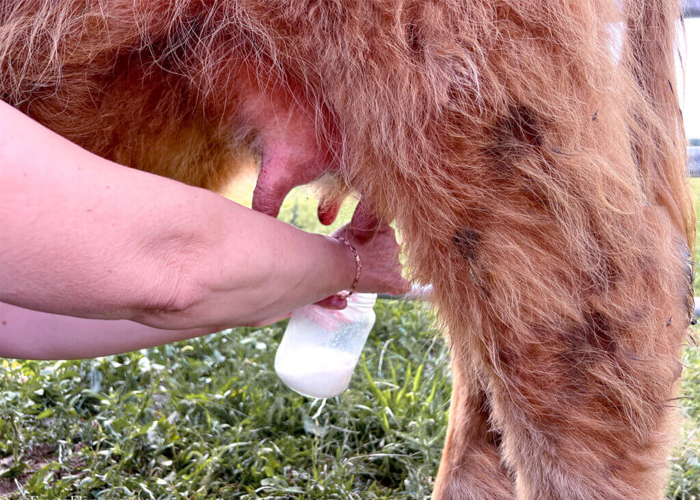
Gender: Bulls vs. Heifers
Gender is another crucial factor influencing the cost of Highland cows. Bulls, being their male counterparts, are often valued for their breeding potential. A well-bred, healthy bull with good genetics can fetch a high price, often several thousand dollars. Bulls are typically sought after by breeders looking to improve their herd’s genetics, making their investment worthwhile.
Heifers, young females that have not yet calved, also hold significant value, especially for those aiming to expand their herd. The price of heifers can vary widely, generally ranging from a few hundred to a couple of thousand dollars, depending on their age, health, and pedigree. Heifers are particularly appealing to those looking to start or grow a breeding program, as they promise future calves and potential milk production.
In contrast, steers (castrated males) are usually less expensive than both bulls and heifers. They are often raised primarily for meat production rather than breeding. Steers can be a cost-effective option for those focusing on beef rather than expanding their herd. Understanding the role each gender plays in a farming operation can help buyers make informed decisions based on their specific needs and goals.
Pedigree: Purebred vs. Crossbred
The pedigree of a Highland cow significantly impacts its price. Purebred Highland cows, with documented lineage and registration, are generally more expensive than crossbred cows. Purebred cows can cost several thousand dollars, reflecting their genetic purity and the assurance of breed-specific traits. These cows are highly sought after by breeders and enthusiasts who value maintaining the breed’s characteristics and improving their herd’s quality.
Crossbred Highland cows, while typically less expensive, offer a more affordable option for those not focused on pedigree. These cows might be crossed with other breeds to enhance certain traits, such as milk production or hardiness. Prices for crossbred cows can vary widely but are generally lower than purebreds, making them accessible to a broader range of buyers.
Choosing between purebred and crossbred Highland cows depends on the buyer’s priorities. For those passionate about preserving the breed and participating in shows or breeding programs, investing in purebreds is the way to go. However, for farmers looking for practical benefits and versatility, crossbreds can be a more economical and suitable choice.
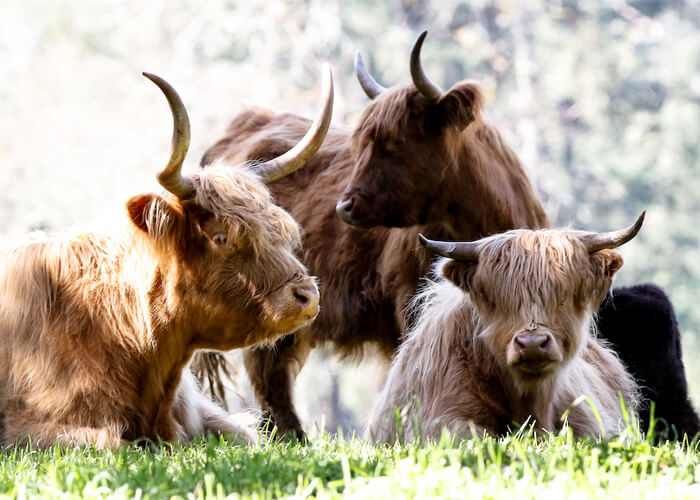
Health and Veterinary Care: Impact of Health on Pricing
The health of a Highland cow is a critical factor in determining its price. Healthy cows, free from diseases and genetic disorders, are more valuable and command higher prices. Regular veterinary care, including vaccinations, parasite control, and routine check-ups, ensures the cow’s well-being and contributes to its market value. Buyers should always inquire about the cow’s health history and request veterinary records to make an informed purchase.
Cows with health issues or a history of medical problems are typically less expensive but come with potential risks and additional costs. These cows might require more intensive care and medical attention, increasing long-term expenses. While the initial price might be lower, buyers need to weigh the cost of ongoing veterinary care and the potential impact on the cow’s productivity and lifespan.
Investing in a healthy cow might seem more expensive initially, but it often proves cost-effective in the long run. Healthy cows are more likely to thrive, reproduce successfully, and provide higher-quality milk or meat. Therefore, prioritizing health when purchasing a Highland cow is crucial for ensuring a good return on investment and maintaining a successful farming operation.
Breeder Reputation: Trustworthy Breeders vs. General Sellers
The reputation of the breeder plays a significant role in the pricing and quality of Highland cows. Trustworthy breeders with a good track record and positive reviews often charge higher prices for their cows. These breeders typically invest in the health, genetics, and overall well-being of their herd, providing buyers with high-quality animals. Purchasing from a reputable breeder ensures that the cow comes from a well-managed and healthy lineage, reducing the risk of genetic disorders and health issues.
General sellers or less reputable breeders might offer lower prices, but the quality and health of the cows can be uncertain. These sellers might not adhere to the same standards of care and breeding practices, potentially leading to cows with unknown health histories or genetic problems. While the initial cost might be appealing, buyers could face higher long-term expenses due to veterinary care and lower productivity.
Choosing to buy from a reputable breeder is an investment in quality and peace of mind. Reputable breeders provide transparency, health records, and support, helping buyers make informed decisions. They also offer valuable advice and guidance on raising and caring for Highland cows. In the long run, purchasing from a trustworthy breeder ensures a healthier, more productive herd and a more successful farming experience.
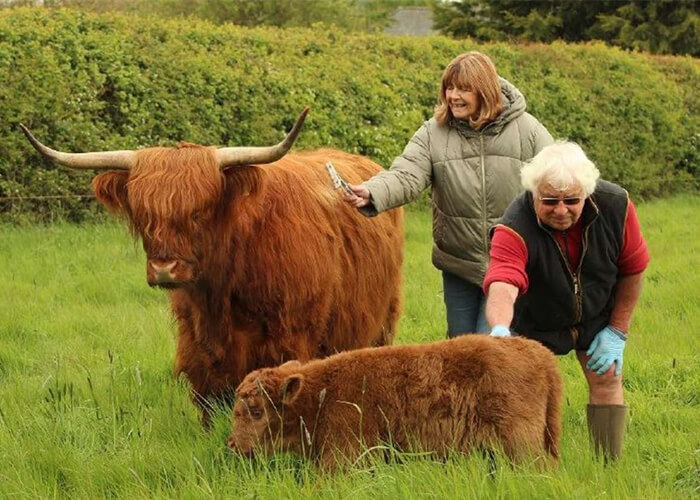
Average Prices for Highland Cows
Calves: Average price range
The price of Highland calves typically ranges from $500 to $2,000. This range depends on factors like the calf’s health, lineage, and whether it is registered with a breed association. Calves from reputable breeders with excellent pedigrees and health records are on the higher end of the scale. Buying a calf can be a more economical choice for those looking to raise and train the cow themselves, but it requires patience and additional resources as the calf matures.
Heifers: Average price range
Highland heifers generally cost between $1,000 and $3,000. The price varies based on factors such as age, health, and pedigree. Younger heifers, around one to two years old, are usually less expensive, while older heifers closer to breeding age can command higher prices. Heifers with excellent lineage and those registered with breed associations are more costly. Investing in a heifer can be a good choice for those looking to expand their herd or start a breeding program, offering future reproductive potential.
Bulls: Average price range
The average price range for Highland bulls is between $2,000 and $5,000. Bulls are more expensive due to their breeding potential and the significant impact they can have on the genetics of a herd. Prices are higher for bulls with proven genetics, good health, and registrations from reputable breeders. A well-bred bull can be a valuable investment for breeders looking to enhance their herd’s quality. However, buyers must ensure they are prepared to manage a bull’s specific care and handling needs.
Pedigree Cows: Price variations based on pedigree
Pedigree Highland cows can range from $3,000 to $10,000 or more, depending on their lineage, health, and breeding history. Cows with an exceptional pedigree, including awards and recognition in cattle shows, command the highest prices. Registered cows from well-known breeders with documented ancestry are more expensive due to the assurance of quality and breed standards. Investing in pedigree cows is ideal for those serious about maintaining or improving their herd’s genetic quality, as these cows offer superior traits and breeding potential.
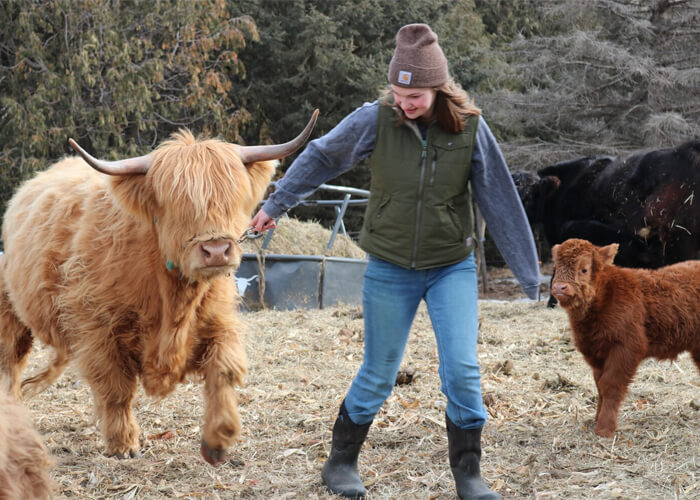
Additional Costs to Consider
Transportation: Cost of moving the cow to your location
Transporting a Highland cow can add significantly to its overall cost. Depending on the distance and logistics, transportation costs can range from $200 to $1,000 or more. Hiring a professional livestock transporter ensures the cow’s safety and comfort during the journey. Factors influencing the cost include the distance to be traveled, the number of cows being transported, and the type of transport used. Buyers should factor in these costs when budgeting for their purchase, as safe and humane transport is essential for the well-being of the cow.
Feeding and Maintenance: Ongoing costs for feed, shelter, and care
Feeding and maintaining a Highland cow involves ongoing costs that can add up over time. On average, feeding a cow can cost between $500 and $1,000 per year, depending on local feed prices and pasture availability. Highland cows also need proper shelter to protect them from harsh weather, which can involve initial setup costs and ongoing maintenance. Additional costs include bedding, fencing, and other supplies. Regular care, such as grooming and hoof trimming, is also necessary. Overall, annual maintenance costs can range from $800 to $1,500 per cow.
Veterinary Expenses: Regular check-ups and emergency care
Regular veterinary care is essential for maintaining the health of a Highland cow. Routine check-ups, vaccinations, and parasite control can cost around $200 to $400 annually per cow. Emergency veterinary care for injuries or illnesses can add significant expenses, sometimes costing several hundred to a few thousand dollars, depending on the severity. It’s crucial to budget for both regular and unexpected veterinary expenses to ensure the cow’s health and well-being. Healthier cows have better productivity and longevity, making the investment in veterinary care worthwhile.
Breeding Costs: Costs associated with breeding Highland cows
Breeding Highland cows involves various costs that potential buyers should consider. Artificial insemination (AI) can cost between $50 and $200 per service, while hiring a bull for natural breeding can range from $500 to $1,500, depending on the bull’s quality and reputation. Additional costs include pregnancy testing, which can cost $30 to $50 per cow, and the care of pregnant cows and newborn calves. Breeding also requires proper management and sometimes specialized facilities, adding to the overall expense. Investing in quality breeding practices ensures healthy calves and improves herd genetics.
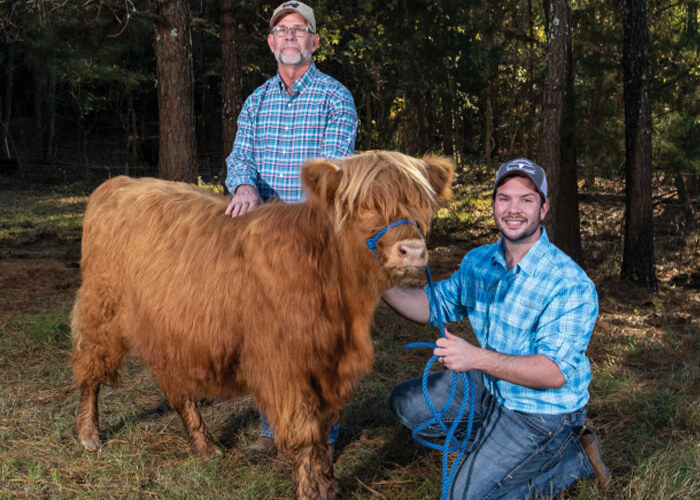
Where to Buy Highland Cows
Breeders: Finding reputable breeders
Finding reputable breeders is crucial for purchasing a healthy, high-quality Highland cow. Start by researching breeders with good reputations and positive reviews. Look for breeders who are members of recognized cattle associations, as this often indicates adherence to high standards.
Visiting farms in person allows you to inspect the animals and facilities firsthand. Ask breeders about their practices, health records, and lineage of their cattle. Building a relationship with a trustworthy breeder ensures ongoing support and advice, helping you make a well-informed purchase that aligns with your farming goals.
Auctions: Participating in livestock auctions
Livestock auctions are a popular way to buy Highland cows. These events provide opportunities to see various animals and compare prices. Before participating, research upcoming auctions and understand the auction process. Attending a few auctions as an observer can help you learn the dynamics and bidding strategies. Be sure to inspect the cows carefully and ask for health and breeding records. While auctions can offer competitive prices, they can also be fast-paced and competitive, so set a budget and stick to it to avoid overspending.
Online Marketplaces: Pros and cons of buying online
Online marketplaces offer a convenient way to purchase Highland cows, with numerous listings from breeders across the country. The pros include a wide selection and the ability to compare prices and pedigrees easily. However, buying online comes with risks, such as not being able to inspect the cow in person.
Ensure the seller provides detailed health and pedigree information and ask for recent photos or videos. Use trusted platforms and read reviews or testimonials from previous buyers. While online purchasing is convenient, it’s crucial to verify the credibility of the seller to avoid potential issues.
Highland Cattle Societies: Resources and recommendations
Highland cattle societies are excellent resources for prospective buyers. These organizations provide information on breed standards, reputable breeders, and best practices for raising Highland cows. They often host events, such as shows and educational seminars, which are great opportunities to learn and network with experienced breeders.
Membership in a cattle society can offer access to exclusive resources, including newsletters, forums, and directories of breeders. Leveraging the recommendations and support from these societies helps ensure you find healthy, well-bred Highland cows and stay informed about the latest industry trends and practices.
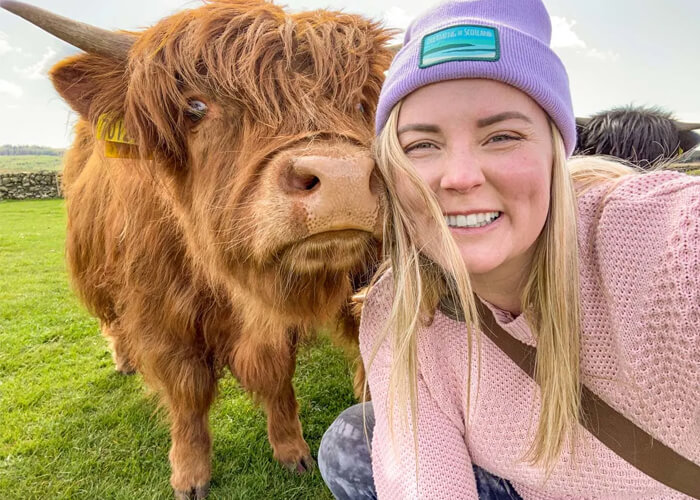
Tips for Buying a Highland Cow
Research: Importance of thorough research before buying
Thorough research is crucial before purchasing a Highland cow. Understanding the breed’s characteristics, care requirements, and market prices helps you make an informed decision. Researching different breeders and their reputations ensures you buy from a trusted source. Learn about the factors affecting cow prices, such as age, gender, and pedigree.
Additionally, familiarise yourself with common health issues and what to look for in a healthy cow. Well-conducted research reduces the risk of unexpected problems and ensures you select a cow that fits your needs and budget.
Visit Farms: Visiting farms and meeting breeders
Visiting farms and meeting breeders in person is essential when buying a Highland cow. These visits allow you to inspect the living conditions, health, and temperament of the cows. Observing the farm’s management practices and facilities gives insight into the breeder’s commitment to quality and animal welfare.
Meeting breeders face-to-face also helps build trust and enables you to ask specific questions about the cow’s health history, lineage, and care. A farm visit ensures transparency and helps you feel confident in your purchase decision.
Health Checks: Ensuring the cow is healthy before purchase
Ensuring the cow is healthy before purchase is vital to avoid future health issues and costs. Request a comprehensive health check, including vaccinations, deworming records, and any history of illnesses or treatments. It’s advisable to have a veterinarian conduct an independent health assessment to verify the cow’s condition.
Pay attention to the cow’s physical appearance, behavior, and overall vitality. Healthy cows have shiny coats, clear eyes, and good body condition. A thorough health check ensures you invest in a robust and productive animal.
Contracts and Guarantees: Understanding the terms of sale
Understanding the terms of sale, including contracts and guarantees, is crucial when buying a Highland cow. A clear contract should outline the price, health guarantees, and any conditions of the sale. Ensure you understand the return policy if the cow has health issues or does not meet the agreed-upon standards. Some breeders offer guarantees for breeding potential or a specific period of health assurance.
Reviewing and comprehending these terms protects your investment and provides recourse if problems arise. A well-defined contract ensures a fair and transparent transaction for both parties.
Check Out: How To Tell if Someone is of Scottish Descent?
Frequently Asked Questions (FAQs)
Highland cows can be relatively expensive compared to other cattle breeds. The cost depends on several factors such as age, gender, pedigree, and health. Generally, calves cost between $500 and $2,000, heifers range from $1,000 to $3,000, and bulls can be priced between $2,000 and $5,000. Pedigree cows, with superior lineage and registration, can range from $3,000 to $10,000 or more. While the initial purchase price may be high, Highland cows are valued for their hardiness, low maintenance needs, and unique appearance, which can justify the investment for many farmers and breeders.
Mini Highland cows, a smaller version of the traditional Highland breed, are increasingly popular among hobby farmers and enthusiasts. Their smaller size makes them easier to manage and suitable for smaller properties. The cost of a mini Highland cow typically ranges from $1,000 to $6,000, depending on factors such as age, gender, pedigree, and breeder reputation. Due to their novelty and demand, mini Highland cows can be more expensive per pound than standard Highland cows. Potential buyers should also factor in ongoing costs for care, feeding, and veterinary expenses.
Highland cows are known for their ability to thrive on less fertile land and rough terrain. Generally, it is recommended to have about 1.5 to 2 acres of pasture per Highland cow. Therefore, for two Highland cows, you would need approximately 3 to 4 acres of land. This ensures they have enough space to graze, exercise, and maintain good health. Proper pasture management, including rotational grazing and maintaining good grass cover, is essential to sustain their nutritional needs and prevent overgrazing. Additionally, supplementary feeding might be required during winter or periods of low pasture availability.
Several factors can influence the price of a Highland cow:
Age: Younger cows and calves are typically less expensive, while cows in their prime breeding age or proven bulls can be more costly.
Gender: Bulls and cows are usually priced differently, with bulls often being more expensive due to their breeding potential.
Pedigree: A strong pedigree with a well-documented lineage can significantly increase the cow’s value.
Health: Healthy animals with no history of disease or genetic issues are more valuable.
Registration: Registered Highland cows with breed associations often command higher prices because of their verified pedigree.
Color: Certain colors, such as black or white, may be more expensive due to their rarity.
Seller Reputation: Cows purchased from reputable breeders who provide extensive care and documentation tend to be priced higher.
Location: The cost can also vary depending on the region, with prices being higher in areas where Highland cows are less common or in higher demand.
Registered Highland cows are generally more expensive than non-registered ones. Registration with a recognized breed association confirms the cow’s pedigree and often includes documented health, breeding history, and lineage. This added level of assurance makes registered cows more desirable, especially for those interested in breeding, showing, or maintaining the purity of the breed. The additional cost of registration and the perceived value of a documented pedigree contribute to the higher price.
Age is a crucial factor in determining the price of a Highland cow:
Calves: Calves are usually less expensive, as they have not yet reached breeding age and require more time and resources to grow.
Young Adults: Cows and bulls in their prime breeding age (typically between 3 to 7 years old) are usually the most expensive, as they are at their peak reproductive potential.
Older Cows: Older cows may be priced lower due to decreased reproductive value, but they might still be valuable for other purposes, such as meat production or as companion animals.
In general, the younger the cow, the lower the price, unless it has exceptional genetics or a rare color that might increase its value.
Conclusion:
In conclusion, answering the question, “How much is a Highland cow,” requires considering various factors that influence the cost. Highland cows can be relatively expensive, with prices ranging based on age, gender, pedigree, health, and breeder reputation. Calves typically cost between $500 and $2,000, while heifers range from $1,000 to $3,000, and bulls from $2,000 to $5,000. Pedigree cows with exceptional lineage and registrations can command prices from $3,000 to $10,000 or more.
Additional expenses such as transportation, feeding, maintenance, veterinary care, and breeding should also be factored into the overall cost. Mini Highland cows, a smaller and increasingly popular variant, can cost between $1,000 and $6,000. Ensuring the cow’s health through thorough checks and buying from reputable breeders can safeguard your investment.
Overall, while Highland cows can be a significant investment, their hardiness, low maintenance needs, and unique characteristics make them a valuable addition to any farm or breeding program. Conducting thorough research, visiting farms, and understanding the terms of sale are essential steps to making a well-informed purchase. By considering all these factors, you can determine how much a Highland cow is worth to you and ensure a successful and rewarding experience with these magnificent animals.
See Here: What Do Scotland People Look Like? Unveiling Physical Characteristics


